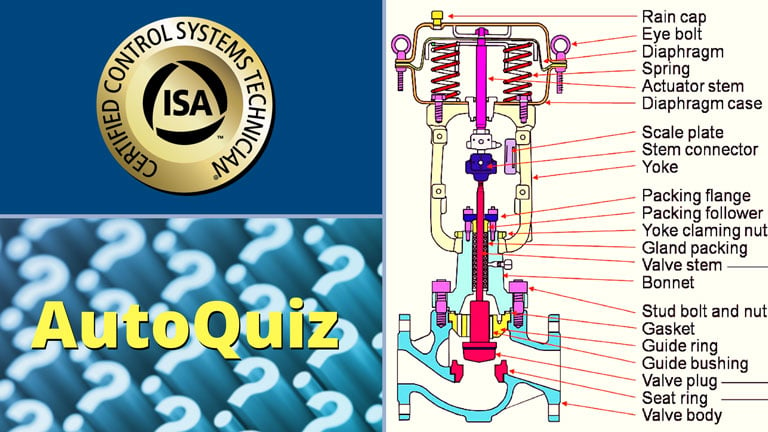 AutoQuiz is edited by Joel Don, ISA's community manager.
AutoQuiz is edited by Joel Don, ISA's community manager.
Today's automation industry quiz question comes from the ISA Certified Control Systems Technician (CCST) program. Certified Control System Technicians calibrate, document, troubleshoot, and repair/replace instrumentation for systems that measure and control level, temperature, pressure, flow, and other process variables. Click this link for information about the CCST program. This question comes from the Level 1 study guide, Domain 3, Troubleshooting. Level I represents a professional who has a five-year total of education, training, and/or experience.
When the percentage of flow through a valve equals the percentage of plug movement, a valve has:
a) linear flow characteristic
b) equal percentage flow characteristic
c) quick opening flow characteristic
d) curved flow characteristic
e) none of the above
A linear flow characteristic is when flow capacity or (Cv) increases linearly with valve travel. Flow is directly proportional to valve travel. This is the preferred valve characteristic for a control valve that is working at the behest of a distributive control system (DCS) or programmable logic controller (PLC).
An equal-percentage valve-flow characteristic is for equal increments of valve plug travel the change in flow rate with respect to travel manifests as a constant percent of the flow rate at the time of the change.
The change in flow rate observed with respect to travel will be relatively small when the valve plug is near its seat and relatively high when the valve plug is nearly wide open.
The correct answer is A.




